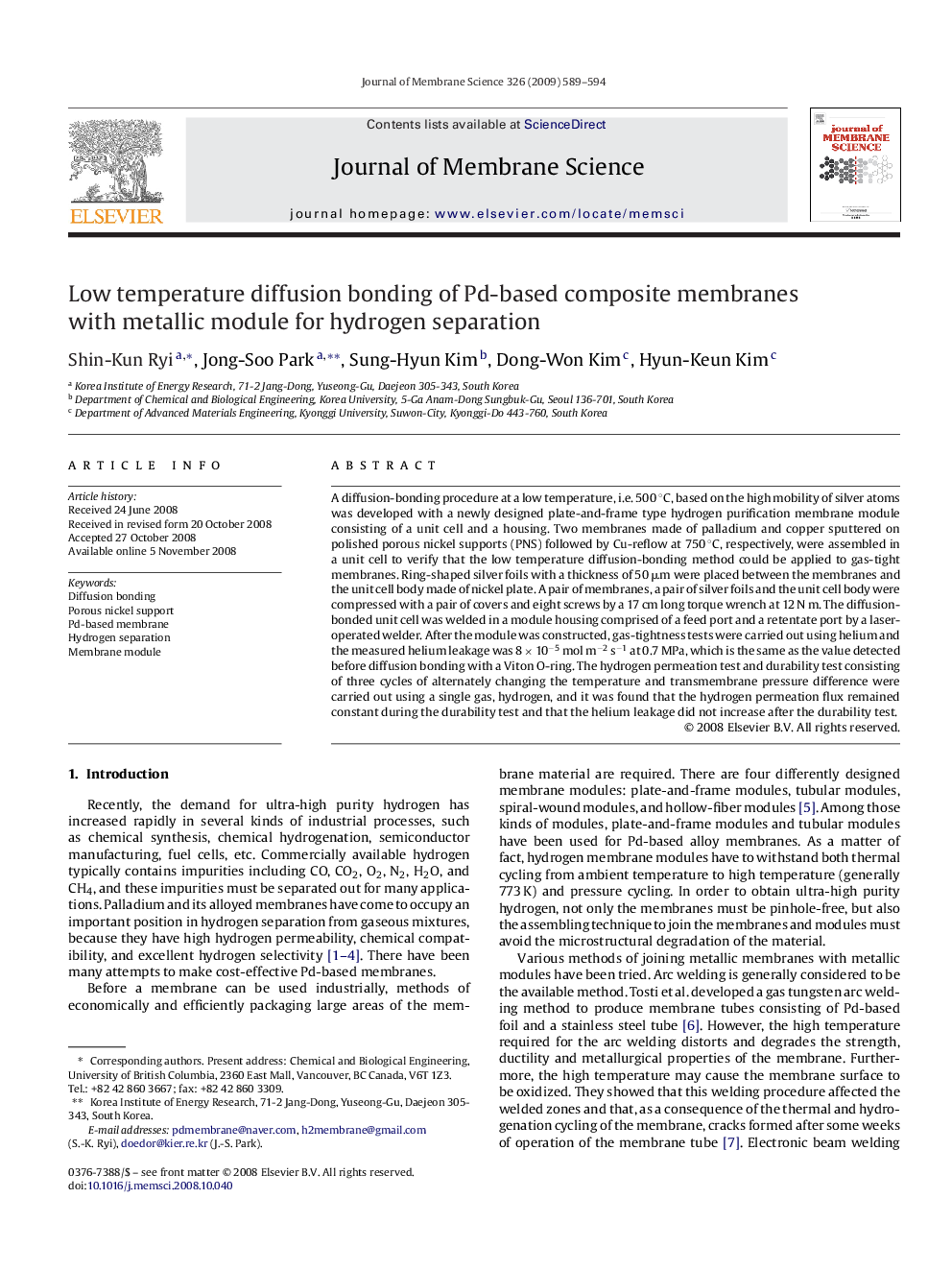| Article ID | Journal | Published Year | Pages | File Type |
|---|---|---|---|---|
| 637419 | Journal of Membrane Science | 2009 | 6 Pages |
A diffusion-bonding procedure at a low temperature, i.e. 500 °C, based on the high mobility of silver atoms was developed with a newly designed plate-and-frame type hydrogen purification membrane module consisting of a unit cell and a housing. Two membranes made of palladium and copper sputtered on polished porous nickel supports (PNS) followed by Cu-reflow at 750 °C, respectively, were assembled in a unit cell to verify that the low temperature diffusion-bonding method could be applied to gas-tight membranes. Ring-shaped silver foils with a thickness of 50 μm were placed between the membranes and the unit cell body made of nickel plate. A pair of membranes, a pair of silver foils and the unit cell body were compressed with a pair of covers and eight screws by a 17 cm long torque wrench at 12 N m. The diffusion-bonded unit cell was welded in a module housing comprised of a feed port and a retentate port by a laser-operated welder. After the module was constructed, gas-tightness tests were carried out using helium and the measured helium leakage was 8 × 10−5 mol m−2 s−1 at 0.7 MPa, which is the same as the value detected before diffusion bonding with a Viton O-ring. The hydrogen permeation test and durability test consisting of three cycles of alternately changing the temperature and transmembrane pressure difference were carried out using a single gas, hydrogen, and it was found that the hydrogen permeation flux remained constant during the durability test and that the helium leakage did not increase after the durability test.
